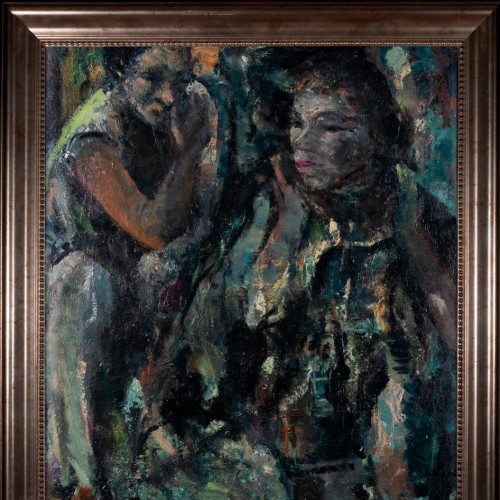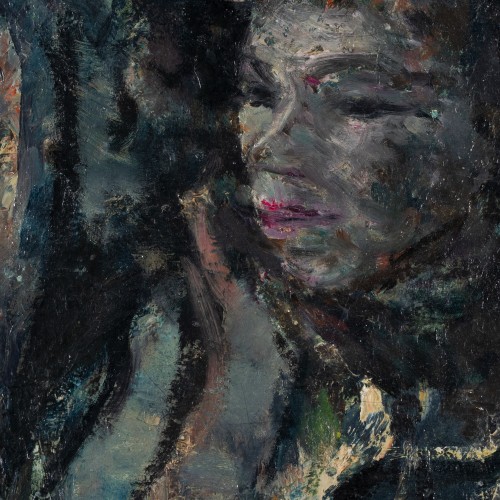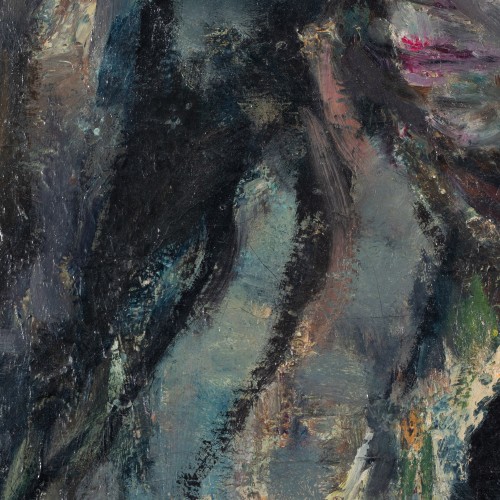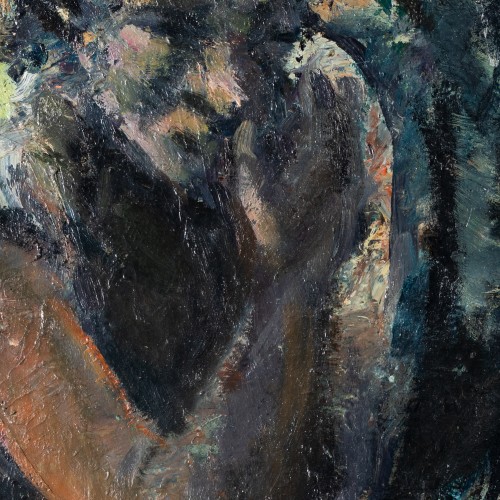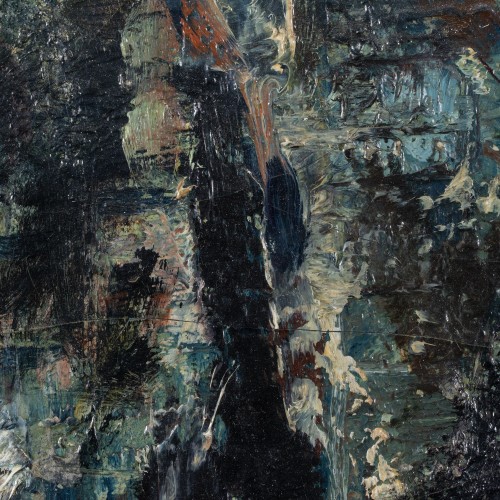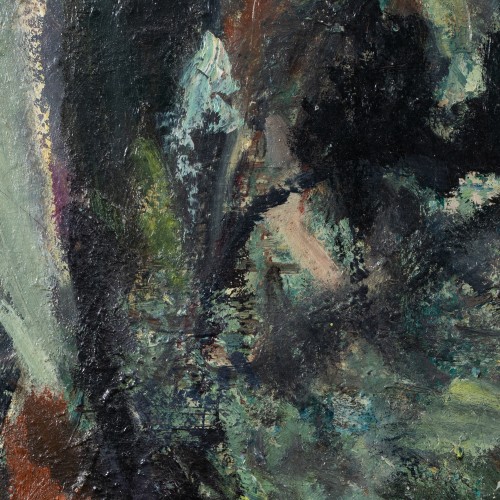Johannes Greenberg
(1887-1951)
Two Women. 1940-1944
Oil, canvas. 74.5 x 63.4 cm (framed)
price 26 000

The work is mentioned in the Late Latvian monograph "Johannes Greenberg 1887-1951" (1990) in the list of preserved works of J. Greenberg on page 83 and reproduced on page 65, it was also exhibited at Greenberg's personal exhibitions in EKM in 1965 (cat) and 1987.
The work comes from the collection of Olga Terri
This work belonged to the artist Olga Terri, a close friend of Greenberg's collection. The painting has been repeatedly shown at exhibitions and is presented in Greenberg's monograph. The work depicts people in their melancholic and tender state, characteristic of Greenberg. However, the work is far from a classic portrait, as it conveys not the individual characteristics of people, but rather the artist's own inner state of mind. In serious tones, the painting digs into both colors and being human with a rarely seen depth, going further with every square centimeter and not settling for superficial answers. Greenberg's ability to continue working even when to others the painting might seem finished is amazing. Greenberg's choice of models is also interesting, because he deals with serious existential issues through the depiction of women. This was not at all common at the time, as women were assigned lighter functions in the paintings.
The work comes from the collection of Olga Terri
This work belonged to the artist Olga Terri, a close friend of Greenberg's collection. The painting has been repeatedly shown at exhibitions and is presented in Greenberg's monograph. The work depicts people in their melancholic and tender state, characteristic of Greenberg. However, the work is far from a classic portrait, as it conveys not the individual characteristics of people, but rather the artist's own inner state of mind. In serious tones, the painting digs into both colors and being human with a rarely seen depth, going further with every square centimeter and not settling for superficial answers. Greenberg's ability to continue working even when to others the painting might seem finished is amazing. Greenberg's choice of models is also interesting, because he deals with serious existential issues through the depiction of women. This was not at all common at the time, as women were assigned lighter functions in the paintings.
Booking and purchase
Appearance in auctions

Portrait of a Woman
1940-1944. Oil, canvas 69.5 x 52 cm (framed)
ESTONIAN ART AUCTION - MID-19TH CENTURY TO 1965 Haus Gallery 06.05.2023
12 000
Final price: 12 000
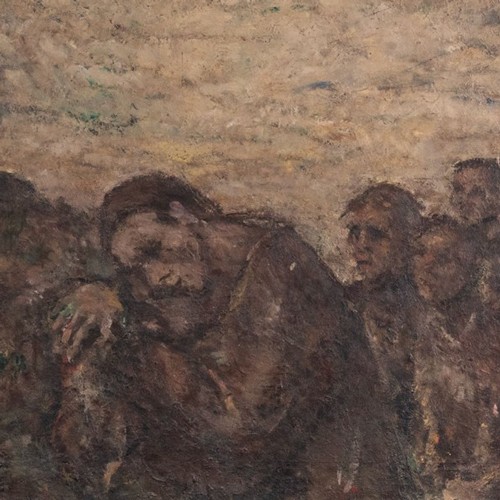
Grief
1943. Oil, plywood 89 x 69 cm (framed)
ESTONIAN ART AUCTION - MID-19TH CENTURY TO 1965 Haus Gallery 06.05.2023
17 000
Final price: 100 000
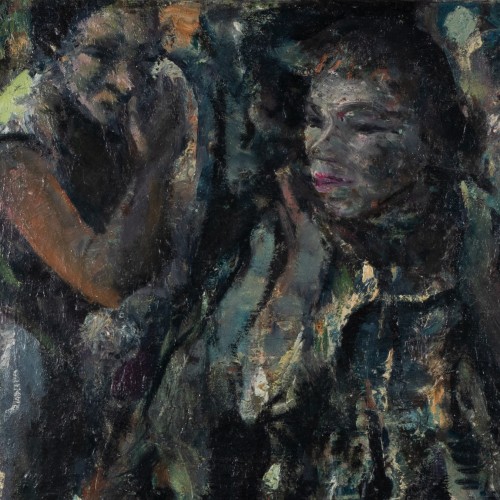
Two Women
1940-1944. Oil, canvas 74.5 x 63.4 cm (framed)
EARLIER ART CLASSICS Haus Gallery 29.10.2022
17 000
Final price: 26 000
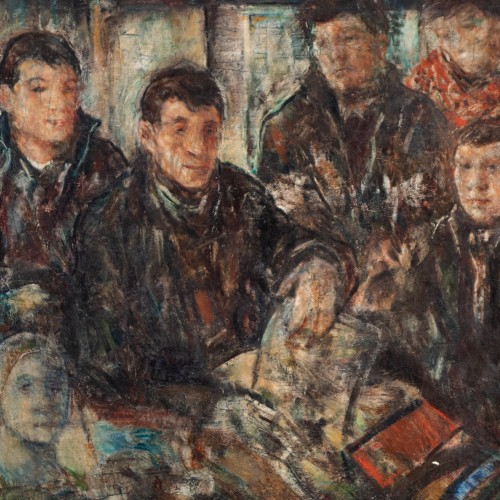
Composition
1940-1944. Oil, canvas 110.5 x 135.5 cm (framed)
EARLIER ART CLASSICS Haus Gallery 29.10.2022
28 000
Final price: 28 000
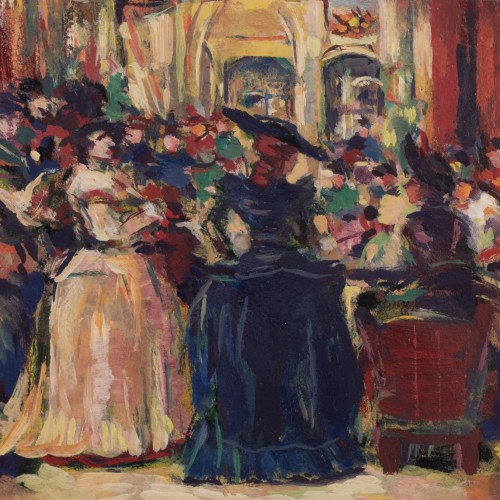
Ballroom Scene
1940s. Oil, paper Vm 17 x 18.2 cm (framed)
EESTI VANEMA KUNSTI KLASSIKA OKSJON Haus Gallery 07.05.2021
4 800
Final price: 8 900
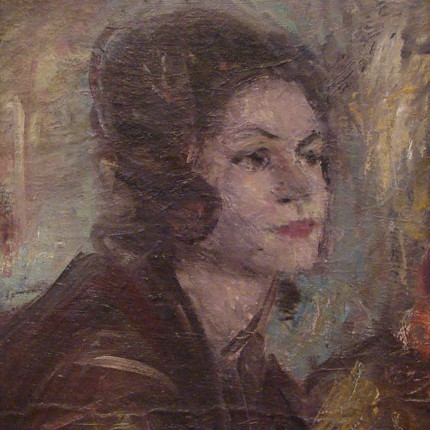
Daami portree
1946-1951. oil on cardboard 42 x 38 cm (framed)
Haus Gallery 25.10.2013
2 200
Final price:
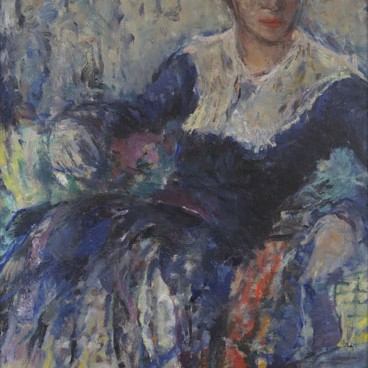
Näitlejanna
1940-1950. oil on plywood 60 x 48 cm (framed)
Haus Gallery 08.11.2010-10.11.2010
3 643
Final price: 3 771
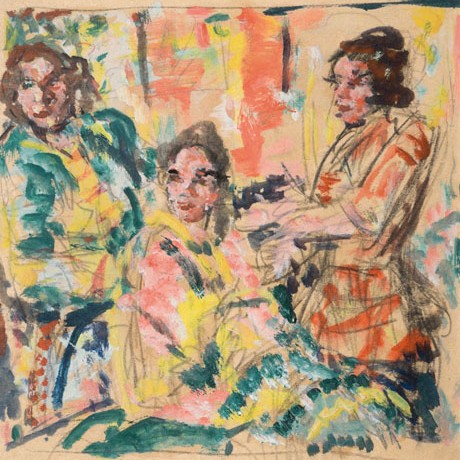
Näitlejad
1916-1918. oil, paper Vm 19.6 x 19.2 cm (framed)
HAUS GALLERY XXIII ART AUCTION 2008 autumn. Old Masters Paintings Haus Gallery 01.10.2008
3 132
Final price:
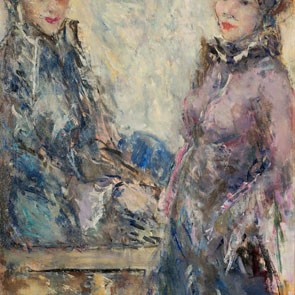
Kaks naist (Ootel)
1939. 59.7 x 38.5 cm
HAUS GALLERY´S 10. anniversary art auction Haus Gallery 25.09.2007
8 309
Final price: 25 565

Istuv akt
1930-1931. Oil, canvas 35.3 x 35.8 cm (framed)
HAUS GALLERY XX ART AUCTION, 2007 spring Old Masters Paintings Haus Gallery 15.04.2007-24.04.2007
4 282
Final price: 8 372
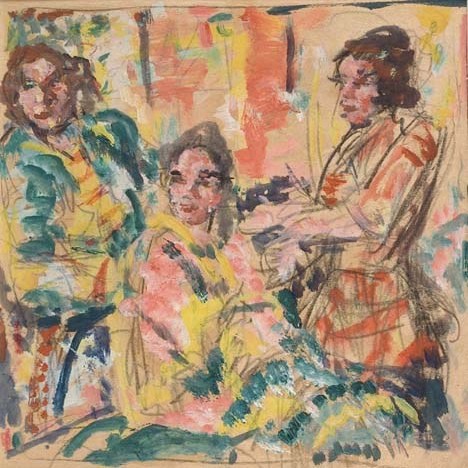
Näitlejad
1916. Oil on paper Vm. 19 x 19 cm
HAUS GALLERY XVIth ART AUCTION, 2005 spring Haus Gallery 25.04.2005
1 470
Final price: 2 301
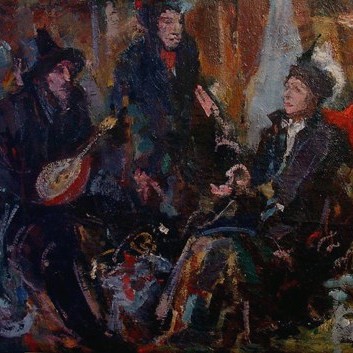
Näitlejad
1940. Oil on canvas 60 x 80 cm
HAUS / XIIth AUCTION, 2003 spring Haus Gallery 24.04.2003
4 090
Final price: 5 241
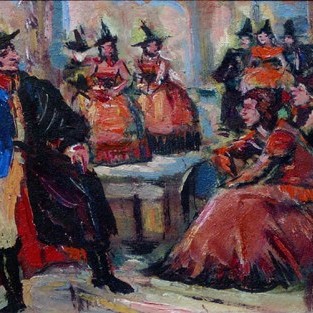
Teatristseen (Mustlasparun)
1940. Oil on cardboard 17 x 24 cm
HAUS / XIIth AUCTION, 2003 spring Haus Gallery 24.04.2003
1 470
Final price: 3 068
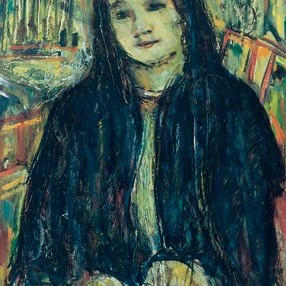
Tütarlaps
1938. Oil on cardboard 78 x 48 cm
HAUS / VII AUCTION, 2000 autumn Haus Gallery 26.10.2000
2 493
Final price:
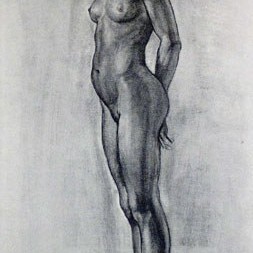
Mulatitar
1910. Coal, chalk, water-color 140 x 78 cm
HAUS / IV AUCTION, 1999 spring Haus Gallery 26.04.1999-24.04.1999
3 132
Final price:
Appearance in exhibitions
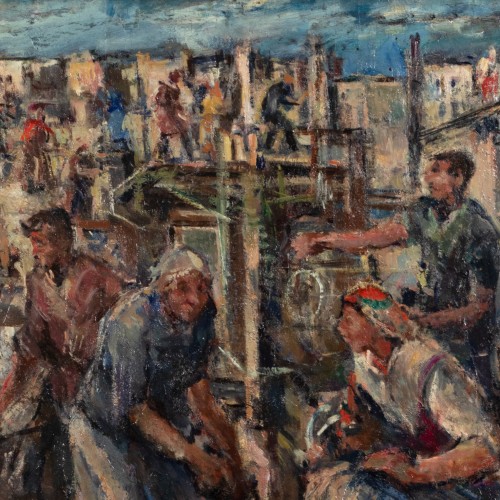
Figural Composition
Undated. Oil, plywood 64 x 48 cm (framed)
WORKS FROM TWO PRIVATE COLLECTIONS Haus Gallery 15.02.2023-13.03.2023
